Compost toilets: introduction
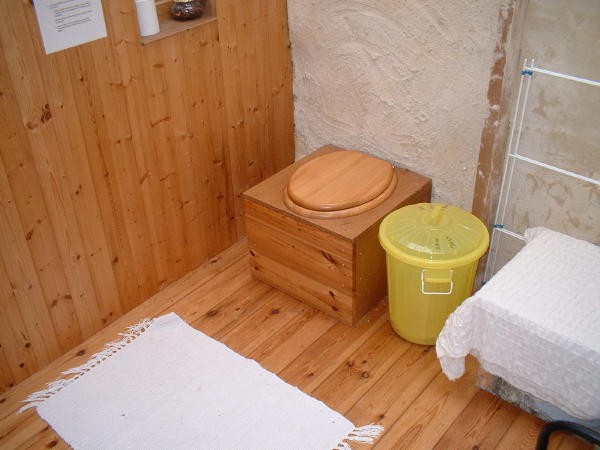
What are they?
A compost toilet is a dry or waterless toilet, i.e. one that doesn’t use water to take the waste somewhere else; it also allows natural processes to produce useful compost, after a resting period depending on the type of toilet.
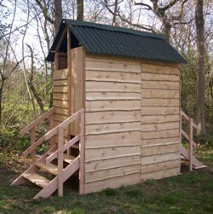
Outdoor compost loo, by the Thunderbox Collective.
DIY compost loos
There are usually two chambers – one in use and one resting. A typical toilet would use one chamber for a year, then change to the second chamber and allow the first to decompose for a year before emptying. They don’t smell, as long as there is a vent pipe, and a drain to take away excess liquid.
A handful of a soak (straw or sawdust etc.) is dropped into the toilet after each use. This is because bacteria like to eat a balanced diet of carbon and nitrogen, and as human waste contains a lot of nitrogen, if they don’t get enough carboniferous material (like sawdust, straw, hay, shredded paper) they will give off excess nitrogen in the form of ammonia, which makes the loo smelly.
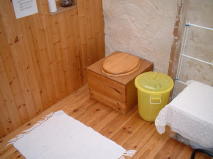
Compost loos don’t have to be outdoors; if done properly, there will be no smells, and an indoor toilet will be more comfortable.
The soak allows oxygen into the pile, and absorbs liquid. This allows the pile to decompose aerobically to produce nitrates, phosphates and sulphates. Without a soak, the pile will decompose anaerobically and produce methane, ammonia and hydrogen sulphide – all smelly and not very useful.
Human pathogens don’t like conditions outside the human body, so almost all will be dead after a few hours. Only one type of roundworm egg can survive a year-long decomposition period, and even that’s not going to survive washing and cooking. But even though it is a tiny risk, you could use the compost on fruit trees and bushes rather than in the vegetable garden.
A tree bog is a type of outdoor compost toilet with nutrient-hungry trees planted around it. Solid and liquid wastes are simply deposited into a hole in the ground, and the tree roots absorb the nutrients.
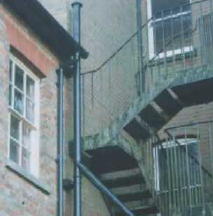
Vent pipe: in this case vent pipes from each chamber meet to vent any smells above the gutter line.
Off-the-shelf compost loos
You can also buy off-the-shelf toilets with one chamber – for inside or outside use.
What are the benefits?
Main benefits
- the solid waste is dealt with on site, and doesn’t have to be treated with chemicals in sewage farms, or end up in waterways, where it causes pollution and algal blooms
- saves water – you don’t have to use one resource (pure drinking water) to flush away another (fertiliser)
- organic matter is allowed to go back to the soil where it belongs, improving soil structure and nutrition
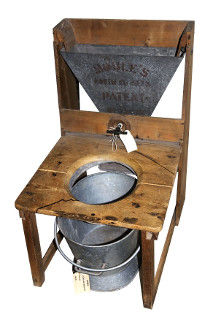
Henry Moule’s earth closet almost became the standard Western toilet in the 19th century.
Other benefits
- no chemical cleaners or bleaches are used in the toilet
- they don’t contribute to the sewage sludge that is often dumped in landfill, or more controversially, put on to agricultural land uncomposted
- as long as the decomposition is aerobic, there will be no greenhouse gas emissions
- no electricity needed
- very low resource use – no pipes are needed to transport waste to a sewage farm, and no truck needed to remove solid waste
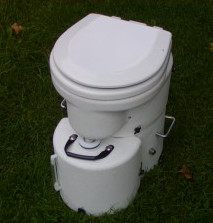
The Air Head toilet is small enough to be used in a camper van or on a boat.
what can I do?
Installing a compost toilet
There are many different types that you can buy. Here are some examples:
- Separett or Air Head: buy from our partner Eco-Toilets – the Separett looks like an ordinary loo, and the Air Head is small enough to be used in a camper van or boat
- Rota-loo: plastic, several chambers on a turntable, fan
- Biolet: small toilets, some models electric, some not; distributed in UK by Wendage Pollution Control
- Clivus multrum: one large chamber, vent with fan
- Sun-mar: small; electricity used to evaporate liquids; distributed in UK by Eastwood Services – 01502 478165
- Natsol: make their own twin-vault loos with stainless steel urine separator
There are many more, with new models coming on to the market each year – do the research to find which model might suit you best. Alternatively, you can build your own. This will work out cheaper, and there is no need for electricity. The components of a basic unit are: two chambers, platform, vent, hatch, and removable seat. Our book explains how to do it. Going on a coursemight be a good idea too.
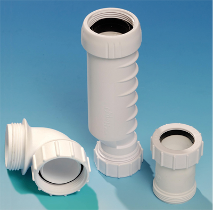
A HepvO valve is the simplest way to convert a conventional urinal to a waterless one.
Using a compost toilet
A compost loo is not a flush-and-forget system. A DIY compost loo needs to be checked every day to see that no problems are developing. If necessary, an ingenious fly-catcher can be made from a glass jar and a little cone made from perspex. Ensure that there’s a bucket with ‘soak’ (e.g. sawdust) next to the loo. To stop a ‘peak’ developing, it may have to be ‘knocked every couple of months with a rake or hoe either via the hatch or seat – this may not be necessary though.
Waterless urinals work well with compost toilets, as urine can be used as a completely-pathogen-free fertiliser, and it stops the compost toilet from becoming too wet. Waterless urinals can be adapted for female use too. Some compost toilets are designed to separate urine from solids.
A compost loo is not a flush-and-forget system. A DIY compost loo needs to be checked every day to see that no problems are developing. If necessary, an ingenious fly-catcher can be made from a glass jar and a little cone made from perspex. Ensure that there’s a bucket with ‘soak’ (e.g. sawdust) next to the loo. To stop a ‘peak’ developing, it may have to be ‘knocked every couple of months with a rake or hoe either via the hatch or seat – this may not be necessary though.
Waterless urinals work well with compost toilets, as urine can be used as a completely-pathogen-free fertiliser, and it stops the compost toilet from becoming too wet. Waterless urinals can be adapted for female use too. Some compost toilets are designed to separate urine from solids.
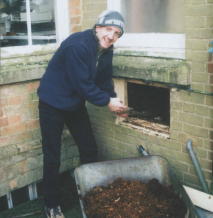
Emptying one of the chambers.
After the toilet has been used for a year, remove the seat and blank off the hole. Attach the seat to the second chamber. One year later, empty the first chamber and move the seat back. The material from the chamber will be indistinguishable from bag compost bought from a garden centre if it’s done properly. We’ve taken compost from a compost loo and from a garden centre to events around the country, and people couldn’t tell the difference.
The procedure is different for various kinds of manufactured toilets. See here for a detailed, step-by-step guide to getting and using a compost loo.
The procedure is different for various kinds of manufactured toilets. See here for a detailed, step-by-step guide to getting and using a compost loo.
Source http://www.lowimpact.org/lowimpact-topic/compost-toilets/
Supplied by Committee Member Georgina Keam

